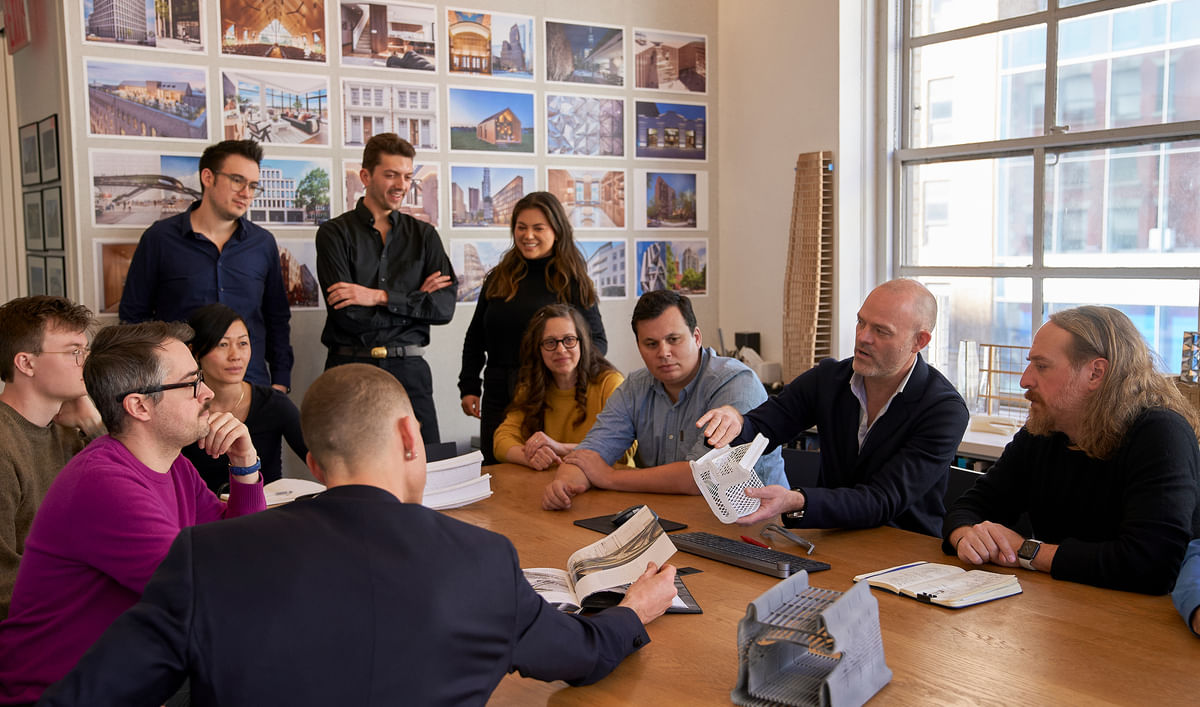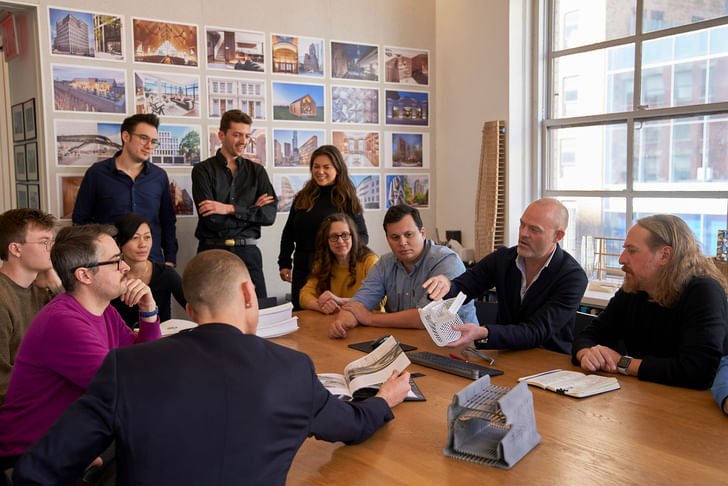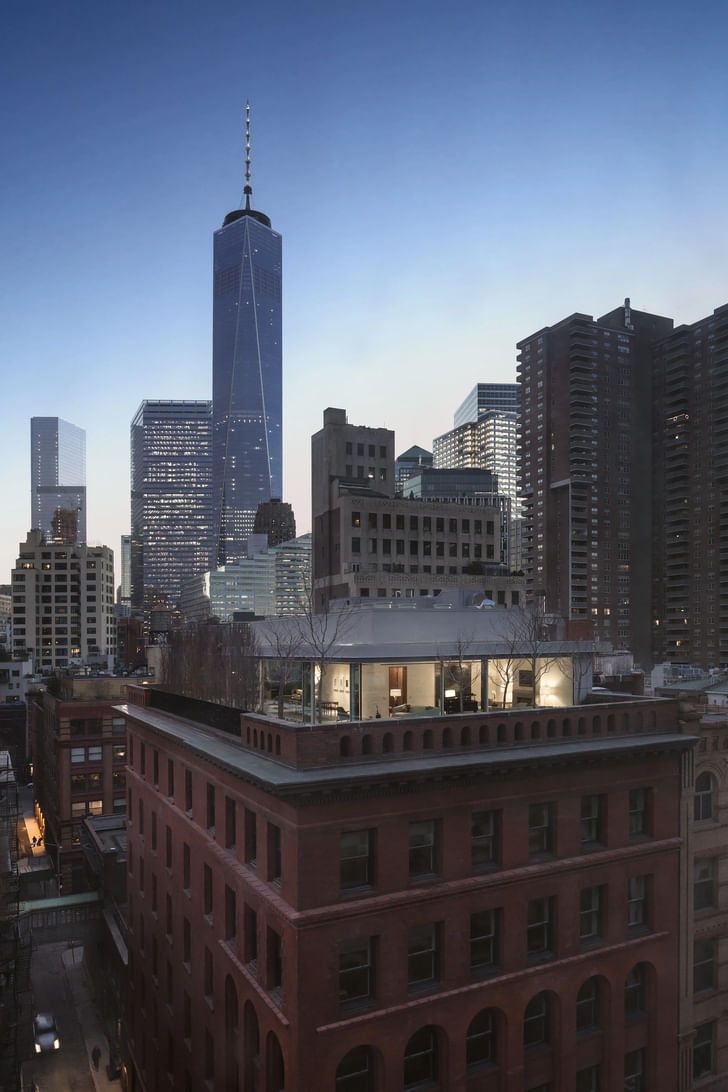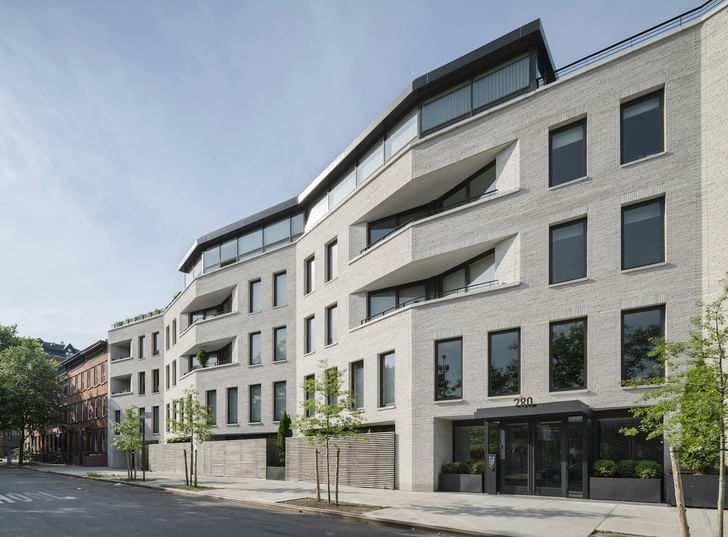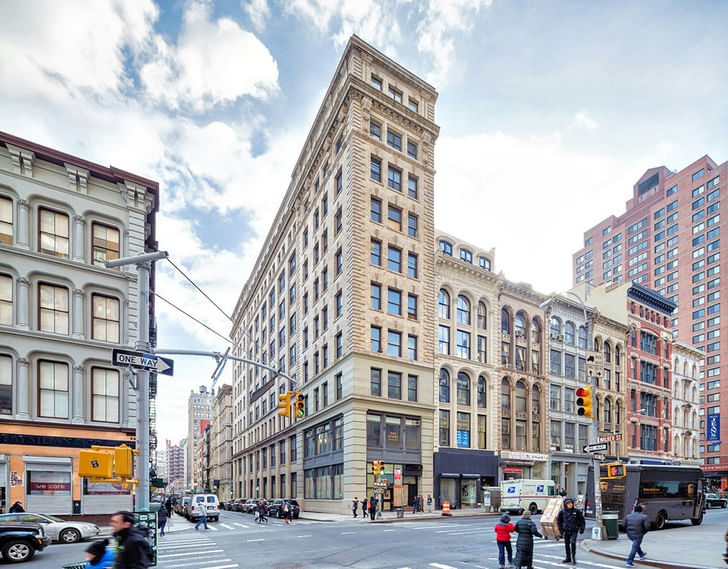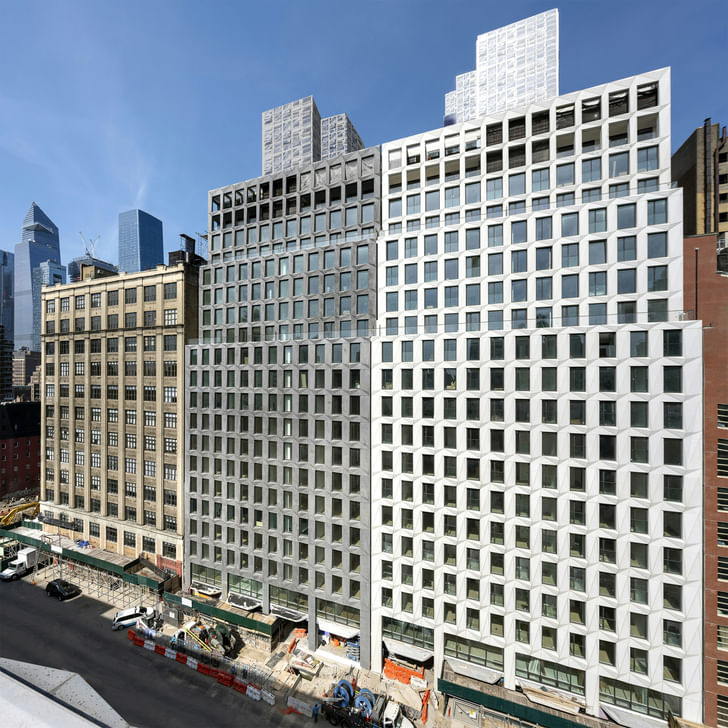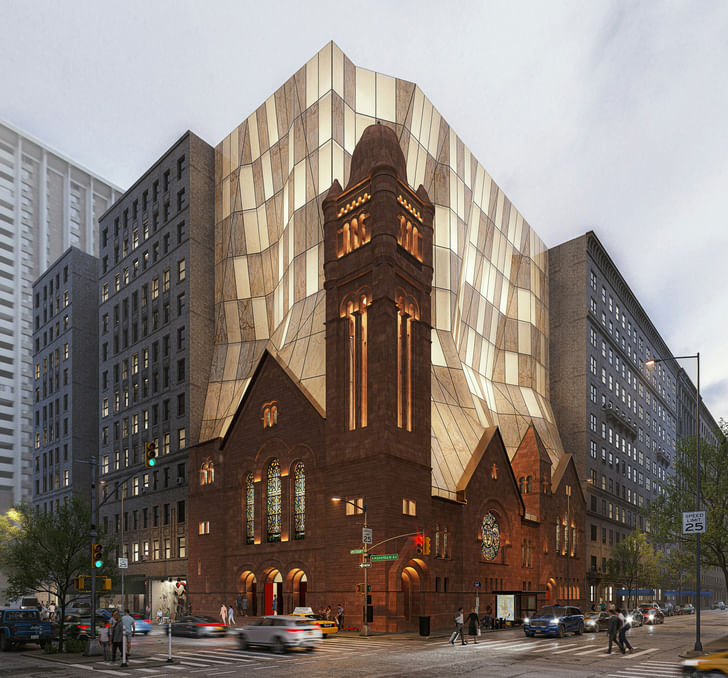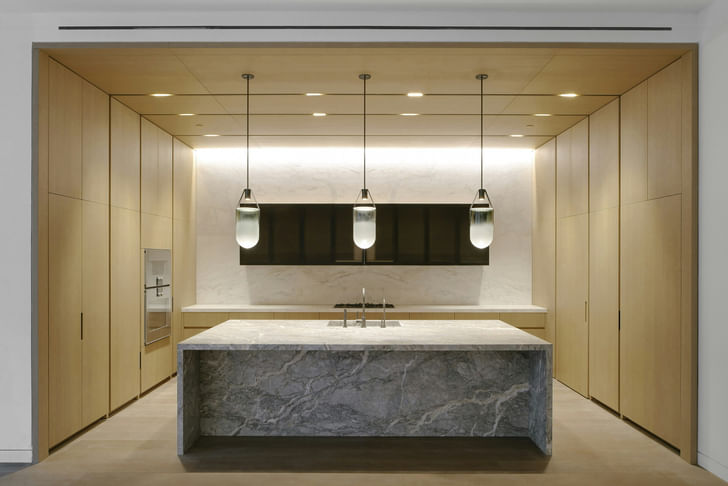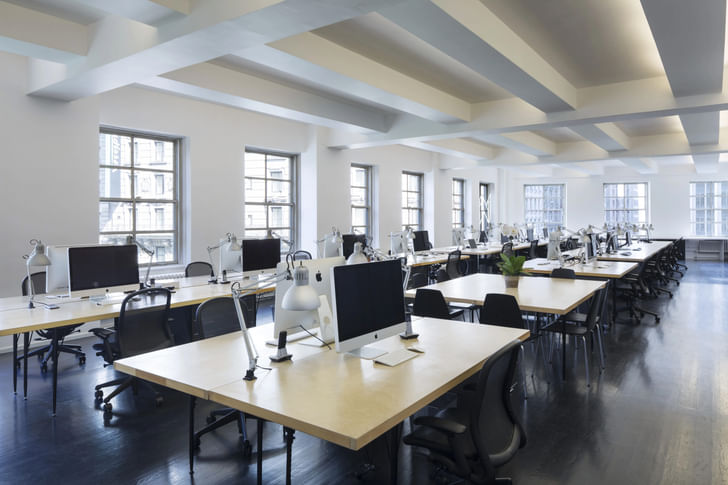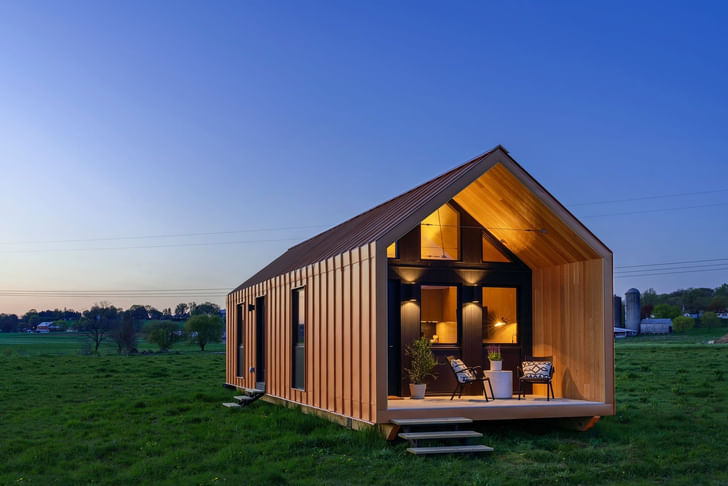The DXA Studio team at their New York City office. Photo courtesy DXA Studio.
For our latest “How To Get A Job At ____” feature, Archinect connected with New York City-based architecture firm DXA Studio. Founded in 2011 by Jordan Rogove and Wayne Norbeck, the practice has built an impressive portfolio of projects that merge cutting-edge modern design with the preservation of NYC’s existing historic built environment.
Our conversation with members of the DXA Studio leadership team delves into their hiring process, preferred skills they look for in interested candidates, and how applicants can increase their chances of getting hired.
What positions are the highest in demand at DXA Studio?
We most often recruit intermediate and senior architectural designers with strong experience in all project phases. Candidates with project management, technical detailing, and Revit proficiency are highly valued as our office takes on complex, large-scale projects. We look for team members who can wear multiple hats and are technically proficient. We are the interior designer for most of our projects, so we’re always looking for keen design sensibilities in both architecture and interior design.
7 Harrison Street in New York City. Photo: Ari Burling.
When meeting with a candidate, what is the best way that they can make a positive first impression during the interview?
Be prepared, be yourself, and show genuine enthusiasm for design. We look for candidates who are confident and have the ability to clearly articulate specific project experiences that highlight key skills. It is important to be able to communicate ideas visually and verbally.
We look for team members who can wear multiple hats and are technically proficient.
Candidates who demonstrate curiosity about DXA’s work and culture and express an interest in the type of work we do show that their interest in working with us is genuine. In short, do your homework.
280 Saint Marks Avenue in Brooklyn. Photo: Florian Holzherr.
What is the most common mistake that candidates make when applying to your firm?
We see a lot of generic applications that don’t highlight how a candidate’s skills align with DXA’s portfolio. Another common mistake is overloading portfolios with quantity rather than carefully curated, high-quality work.
Not including a cover letter is another missed opportunity. This is a nice touch and provides an opportunity for a candidate to tell us a little more about themselves and to explain their resume and portfolio. A prompt interview thank-you note also goes a long way.
The Walker Hotel in New York City.
How important is an applicant’s educational background?
Education is important as it provides a foundation, but what matters most is the combination of design ability, technical competence, and professional experience. A strong school can open doors, but demonstrated skill and creativity weigh more heavily in our hiring decisions. Attitude and perceived fit with our studio outweigh an alma mater.
Attitude and perceived fit with our studio outweigh an alma mater.
What makes an outstanding CV/portfolio?
A great portfolio is clear, concise, and visually compelling. It should showcase not only design talent but also technical rigor, collaborative skills, and problem-solving ability. We appreciate when applicants highlight their specific contributions to each project rather than presenting teamwork without context. The ability to articulate a clear vision for their work gives us insight into a candidate’s analytical capabilities.
Maverick Chelsea in New York City. Photo: Chris Coe/Tim Waltman.
DXA Studio has established a portfolio of technically complex designs. What kind of technical skills are absolutely essential for applicants?
A clear grasp of the dynamics of thermal enclosure, structural concepts, and details for construction types typical to our region is very helpful. Expressing interest in attaining or deepening this knowledge indicates dedication to craft and increases a candidate’s ability to make a meaningful contribution to project development.
In terms of tools, a good understanding of AutoCAD and Revit is preferred. BIM coordination and construction documentation are especially valuable, as many of our projects involve advanced technical and detailing challenges. Agility in Bluebeam and substantial construction admin experience for intermediate and senior roles are essential.
Adobe Creative Suite is the basis for all of our client presentations, and 3D visualization ability via Rhino, SketchUp, Enscape, and Vray can set you apart from other candidates.
West Park Presbyterian Church in New York City (concept).
What kind of training do new hires receive during their first day on the job?
On day one, new hires are welcomed into the office culture with an orientation session, introductions to our teams, and training on our software standards and project workflows. We make sure they’re quickly integrated into active projects so that familiarity with our process is gained in real-time.
We treat internships as a pipeline for future full-time hires.
Do you have an internship program? If so, briefly describe.
DXA offers summer and academic-year internships. Interns are immersed in project teams, contributing to design studies, drawings, and presentations, while also gaining exposure to site visits and office culture. We treat internships as a pipeline for future full-time hires.
47-49 Greene Street in New York City. Photo: Florian Holzherr.
How do you encourage work-life balance for your employees? Does DXA Studio have any fun, long-standing traditions?
We value balance and try to foster a supportive, team-oriented environment. While deadlines can be demanding, we encourage flexible scheduling when possible. DXA has long-standing traditions like studio outings, holiday parties, design pin-ups, and Thursday happy hours, which help build camaraderie and keep the culture lively.
DXA is an active participant in New York’s design community and always has a strong showing at design events, award shows, and cultural events. We have robust ties to Sara and OHNY and have also built a lasting relationship with the European Cultural Center through multiple years of exhibiting at the Venice Biennale in Italy.
DXA Studio office in Manhattan. Photo: Ari Burling.
Based on your own observations, how has DXA Studio’s design process and office culture evolved over the years? What aspects of your practice do you want to improve?
Over time, DXA’s design process has become more collaborative and technology-driven, with a stronger emphasis on sustainability and advanced digital tools. Our culture has also grown more diverse and interdisciplinary. Looking ahead, we aim to continue improving work-life balance, mentorship opportunities, and innovation in sustainable design practices.
Our humanitarian work was a keystone of establishing the office and began with work in Haiti years ago.
DXA’s work has always focused on a marriage between contemporary design ideas, forged through deep research, technology-driven, and sustainable and ethical approaches. We also emphasize the importance of context and respect for history and place. This process has evolved across all scales of projects and has led to a deep understanding of designing in the city of New York and beyond.
Our humanitarian work was a keystone of establishing the office and began with work in Haiti years ago. It has evolved into the establishment of a second company, Liv-Connected, that produces modular housing. This year, we completed 167 houses in Maui to house survivors of the Lahaina Wildfire. This is just one example of starting small with big ideas that, over time, have grown into something truly meaningful.
Liv-Connected Conexus Home
Finally, if a job candidate had the choice between you and another firm, what argument would you use to win them over?
At DXA, you’ll have the chance to work on ambitious, technically complex, and culturally meaningful projects while being part of a tight-knit, collaborative studio. We offer the resources of a larger practice and the personal, creative atmosphere of a boutique firm — a balance that makes for both professional growth and genuine enjoyment of the work.
We provide exposure to a wide range of project types and encourage junior staff to participate in client meetings and take on leadership roles early in their careers. The firm values a collaborative, friendly environment where everyone’s contributions are supported and recognized.

